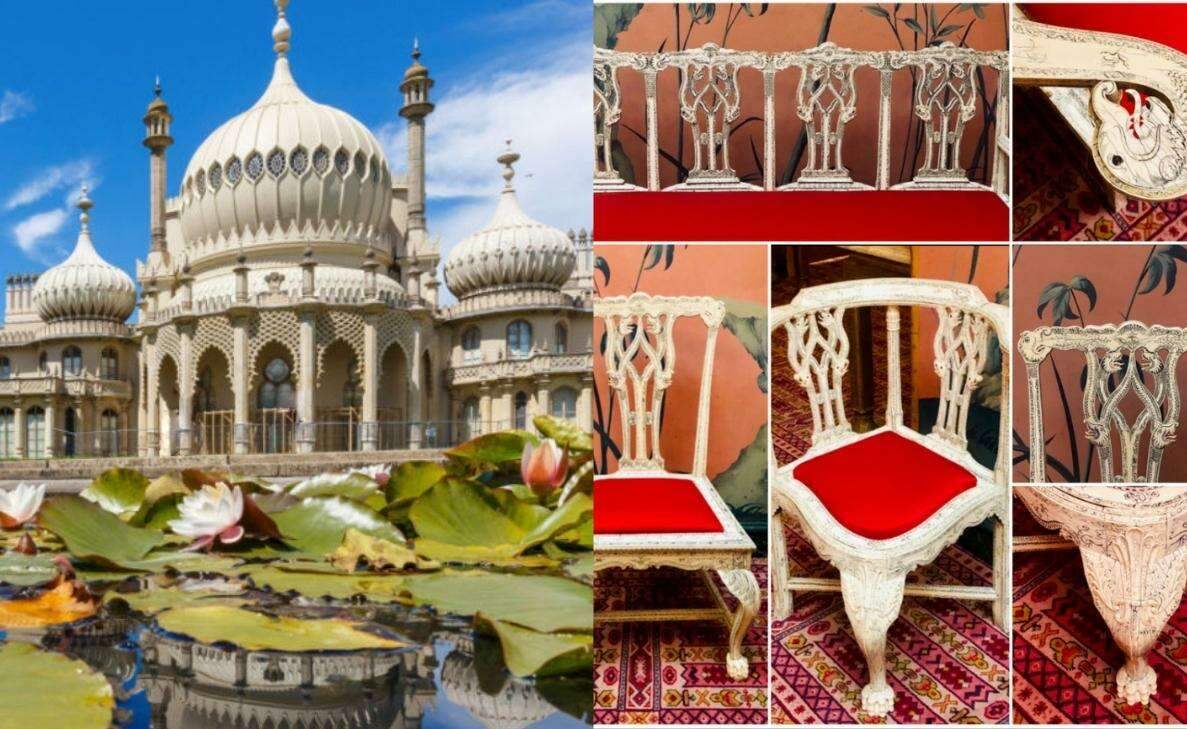

The importance of the long and rich history of Vizag can be heard not only in the local fables but across the oceans. The name of this city can also be seen in several important chapters in the independence struggle. Proving the admiration the English had for this beautiful coastal city and its arts, John Castellas, a Vizag heritage enthusiast and aficionado, shares an anecdote he penned during his recent visit to London. In this article, he narrates how a few masterpieces by the 1700s artisans from Vizag found their place in the Royal Pavilion Brighton, United Kingdom.
In the mid-1800s, English visitors arriving in Vizag by steamer gazed upon its surf-washed shoreline and chunam-painted bungalows claiming it was like Brighton on India’s East Coast. Newspapers and magazines describe the town as the Brighton of the East Indies. In 2022, I stand inside Brighton’s most famous landmark, the Royal Pavilion, and gaze upon masterpieces from Vizag in the heart of Brighton. Walking along Brighton’s seafront on a sunny – but breezy – autumn morning, it is easy to understand why three successive monarchs came to stay in the town. The clear sunshine, the crashing waves, the smell of fish, the screech of gulls, and the buzz of activity enrich the atmosphere of a town that’s salty, showy, stylish and unabashedly itself.
In the centre of Brighton, it is an instantly recognisable building that would look more like home in India than by the Sussex coast. The Royal Pavilion Brighton was an escape home for George IV, William IV, and Queen Victoria who all enjoyed their visits to the seaside, with all three monarchs taking up residence at the Royal Pavilion for several months at a time.
An architectural marvel with a blend of domes and minarets of Indian, Mughal, and European influence for the exterior, the Royal Pavilion is an extravagant palace inspired by oriental design. When George IV became the Prince Regent, he commissioned architect John Nash to revamp the building with no expense spared, and so the pavilion we know now was born.
Also read: Rewind the clock with these historical maps of Vizag
The interiors of the Pavilion are oriental and are full of simulated bamboo, lacquer, pagodas and dragons, giving them an exotic feel. He had the walls painted with a bamboo mural and then lit by painted skylights in the day and by Chinese lanterns at night. The Prince Regent never visited Asia yet the Pavilion’s architecture embodied the Empire’s perpetual fascination with the east. I took a stroll past the pink walls of The Long Gallery, with its gold detailing and intricate Chinese illustrations, and could see this fantasy embodied. Eighteen years after King George’s death in 1849, the parliament passed a bill to demolish the Royal Pavilion. Before this could happen, however, the town bought the building for £53,000. Since then, the local heirloom has been subject to an ongoing project of conservation.
The late Queen Elizabeth revived a Royal practice in 1863, when Victoria began to give objects back to the Pavilion, and made an extraordinary loan of over 120 objects, including vases, clocks and furniture, after more than 170 years of absence. Among them, is an extraordinary set of 10 ivory carved chairs manufactured in Vizagapatam in the 1700s that are in the Long Gallery. The Pavilion’s architect Nash first depicted the Vizagapatam Ivory Chairs in a watercolour painting in 1824.
This type of ivory furniture was made in some quantity in Vizagapatam in about 1770. The shapes were probably copied from existing English-made furniture rather than from the engraved designs in publications such as Thomas Chippendale’s Gentleman and Cabinet-Maker’s Director, which first appeared in 1754. In 1775, Alexander Wynch (Governor of Madras 1773-75) had a set of ivory engraved, crimson cushioned furniture made by artisans on Beach Road, Vizagapatam. The 10 items had as their centrepiece a settee and included straight-backed chairs and armchairs which were shipped to his estate in the UK. They were then bought by Queen Charlotte and passed into the estates of George III and IV and were displayed in the Royal Pavilion in Brighton until Queen Victoria moved them to Buckingham Palace in the mid-1800s. Nearly 200 years later, they are now on loan and on public display at the renovated Royal Pavilion in Brighton, UK.
It is a unique privilege to view these exquisite pieces of Vizagapatam craftsmanship in a far corner of the world. They are fittingly displayed in one of England’s grand buildings with Indian architectural features. There is no sign to tell of the furniture’s origin, history, or value, yet these masterpieces lie as a forgotten treasure of Vizagapatam and as a silent tribute to the heritage of Vizag at the Royal Pavilion in Brighton, UK.
Should you have an anecdote or history on Vizag, the author would appreciate you contact him at jcastell@ozemail.com.au
Written by John Castellas whose family belonged to Vizag for 5 generations. Educated at St Aloysius, migrated to Melbourne, Australia in 1966, former General Manager Engineering at Boeing & Qantas Airways, in retirement Lecturers in Aviation Management at Swinburne University and is a Vizag aficionado. He can be contacted at jcastell@ozemail.com.au
Stay tuned to Yo! Vizag website and Instagram for more articles on the history of Vizag.
Karate Kid: Legends, the sixth instalment in the Karate Kid franchise, has hit theatres and…
The weekend has officially begun! With the start of a fresh Friday evening comes the…
Most people know they should save for retirement. But when it comes to how much,…
Vizag-origin filmmaker, Sagi Sree Hari Varma, will start a remarkable journey to Italy to participate…
An elderly 64-year-old man from HB Colony in Visakhapatnam passed away shortly after testing positive…
Yoga training sessions are being conducted by the district administration at the ward secretariats in…
Leave a Comment